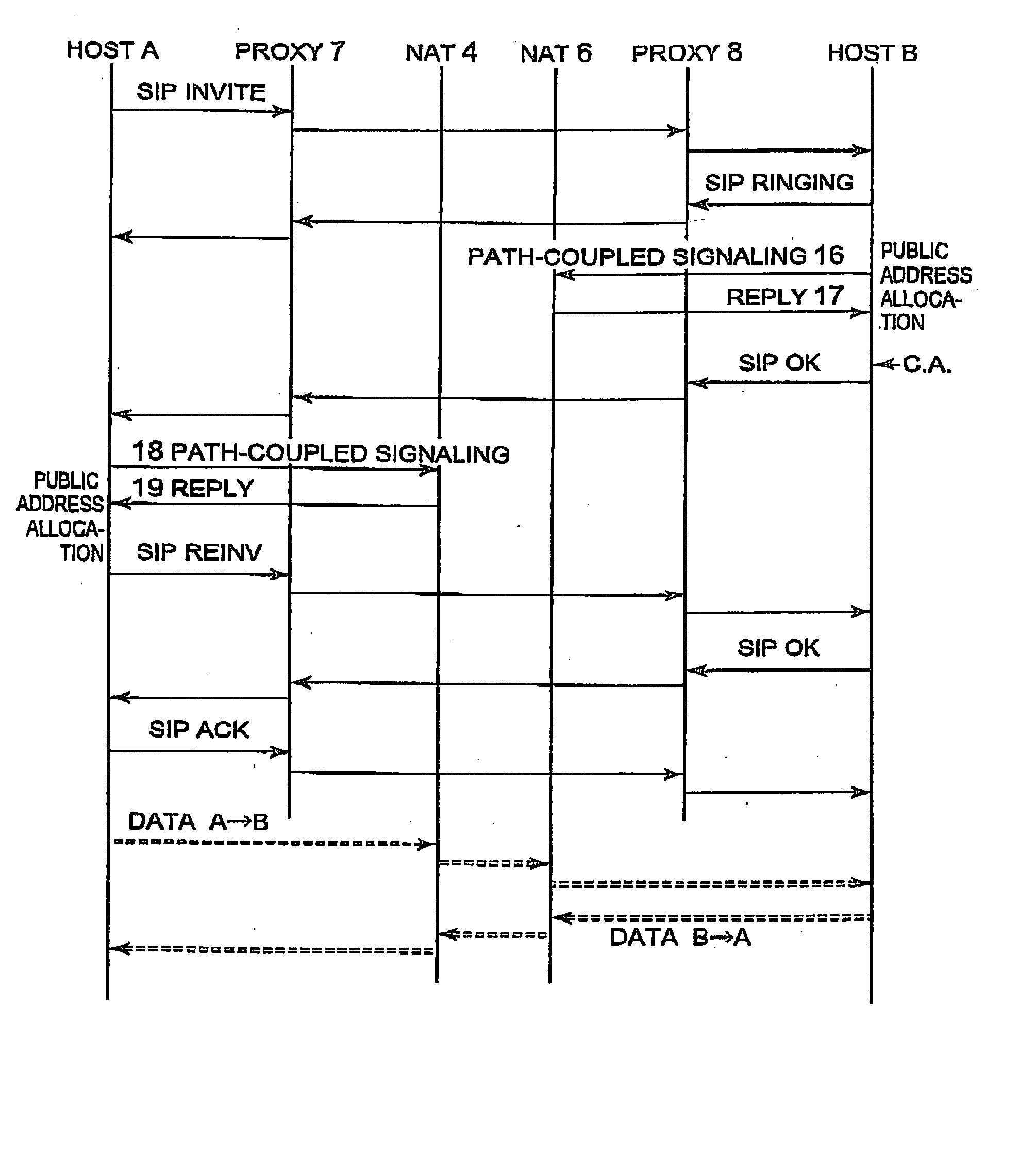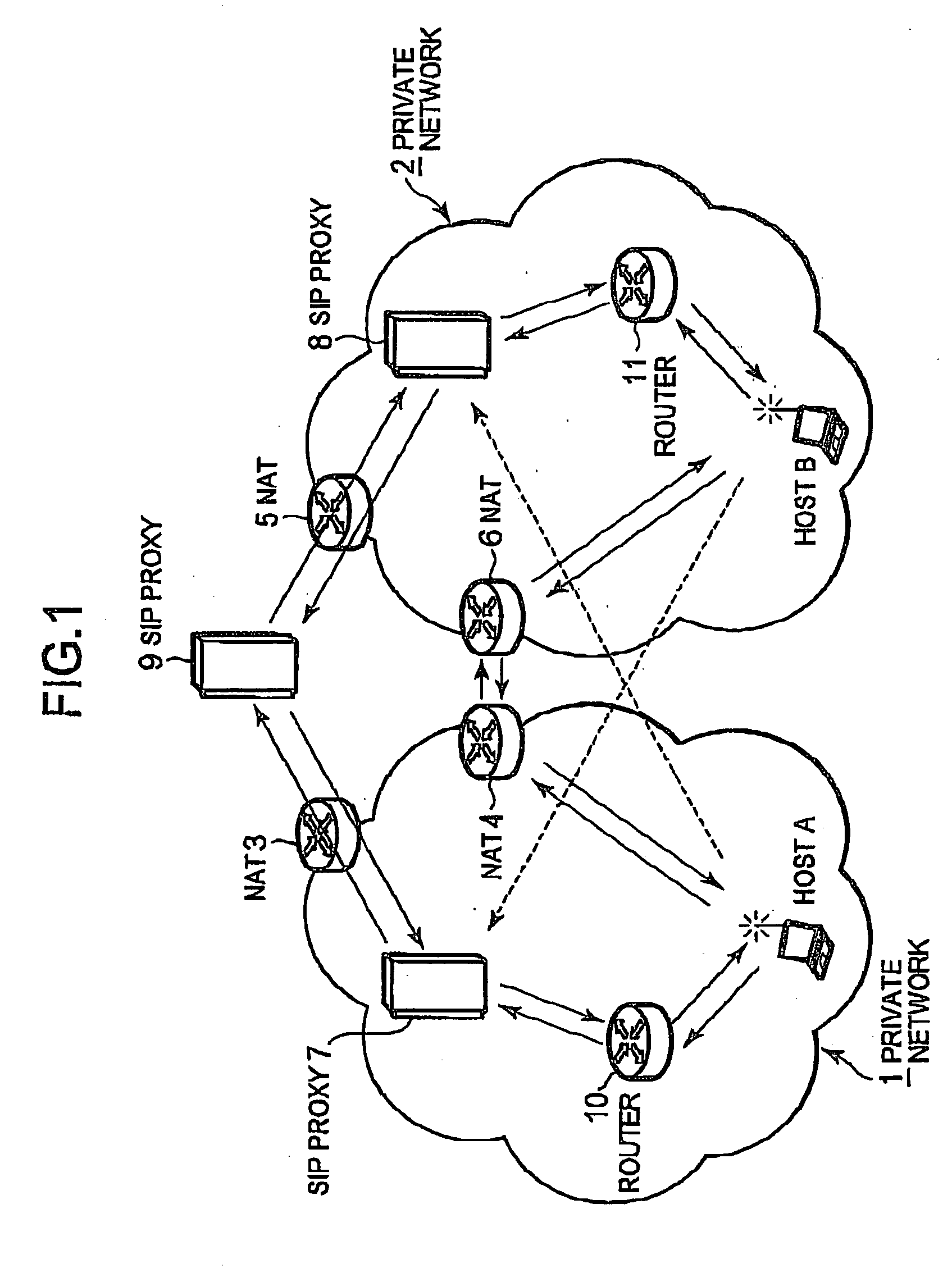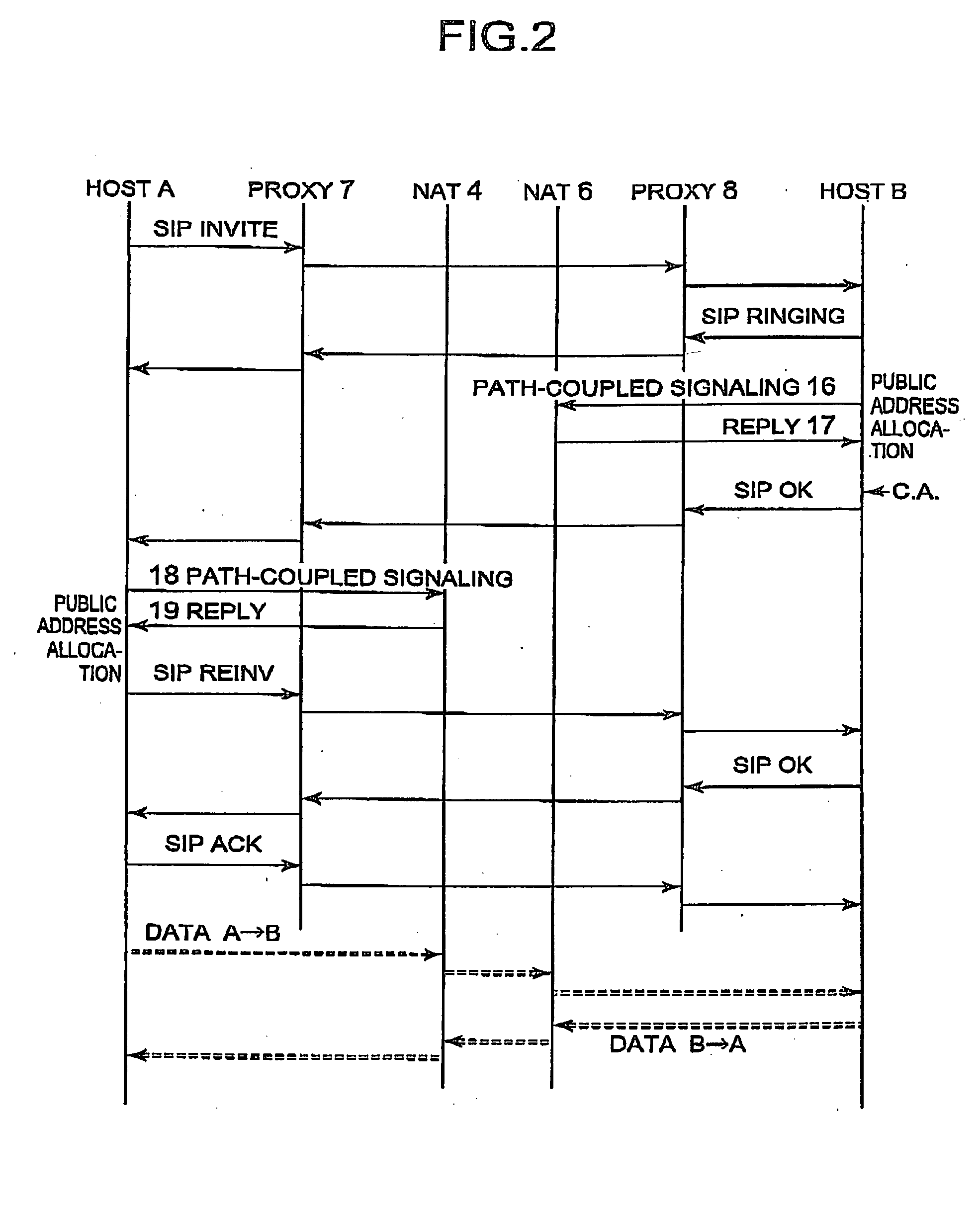Method for traversing network address translators for SIP-signaled sessions
- Summary
- Abstract
- Description
- Claims
- Application Information
AI Technical Summary
Benefits of technology
Problems solved by technology
Method used
Image
Examples
first embodiment
[0046]FIG. 2 shows schematically a first embodiment of the present invention to exchange data between host A—caller and host B—called party. In addition to the two hosts A and B communicating with each other, the figure in the top line shown a SIP proxy 7 and a NAT 4 of the private network of Host A as well as a SIP proxy 8 and a NAT 6 of the private network of Host B. For the NAT 4, 6, it should be assumed that this is the last NAT before the public address space. Since the public address of the SIP proxies 7, 8 is a NAT connection to the respective NATs 4, 6, the SIP proxies 7, 8 each have a real private address and a virtual address which can be accessed from the outside i.e. from the public address space.
[0047] In the course of setting up the SIP connection, the host A initially sends a SIP INVITE message to the host B, which replies to this with a SIP Ringing message. The host B then sends a path-coupled signaling packet 16 in the direction to the SIP proxy 7 which is the firs...
second embodiment
[0051]FIG. 3 shows schematically a second embodiment of the present invention, in which the same elements or the same process steps as in FIG. 2 are denoted by the same reference numerals or characters.
[0052] According to the second embodiment as shown in FIG. 3, in the first step, the address allocation is carried out immediately on the NAT 4 of the caller—host A. More specifically, a DNS resolution of the SIP name of the desired communication partner—host B—is carried out. The SIP name is allocated to the SIP proxy 8 (corresponding with a public IP address) on which the called party has been registered.
[0053] The caller host A sends a path-coupled signaling packet 18 in the direction of the SIP proxy 8, which causes a public address to be allocated to the host A on the NAT 4 of its private network 1.
[0054] Subsequently, the host A sends a SIP INVITE message to the host B to inform the host B of the address allocated to the host A Using the public address allocated to the host A...
third embodiment
[0055]FIG. 4 shows schematically a third embodiment of the present invention, in which the same elements or the same process steps as in FIG. 2 are denoted by the same reference numerals or characters.
[0056] According to the third embodiment, the address allocation on the NAT 4 of the caller—host A—is carried out on the basis of the SIP Ringing message. This SIP Ringing packet contains the same via header information as the SIP INVITE message with only the order of the headers being different.
[0057] When having received the SIP Ringing message, the host A sends a path-coupled signaling packet 18 to the SIP proxy 8 specified by the last via header of the received SIP Ringing message, which is located topologically near to the host B.
[0058] In the third embodiment, a public address has been already allocated to the host A before the host B accepts the call, for example, by picking up the receiver of its Internet telephone. In this way, a fast connection set up is guaranteed. In the...
PUM
 Login to View More
Login to View More Abstract
Description
Claims
Application Information
 Login to View More
Login to View More - R&D
- Intellectual Property
- Life Sciences
- Materials
- Tech Scout
- Unparalleled Data Quality
- Higher Quality Content
- 60% Fewer Hallucinations
Browse by: Latest US Patents, China's latest patents, Technical Efficacy Thesaurus, Application Domain, Technology Topic, Popular Technical Reports.
© 2025 PatSnap. All rights reserved.Legal|Privacy policy|Modern Slavery Act Transparency Statement|Sitemap|About US| Contact US: help@patsnap.com



